There are no ugly ducklings. And here’s proof.
The Indian Spot-billed Duck (Anas poecilorhyncha) is one of our commonest wetland birds. It is a resident in India and Pakistan, although there have been stray records of these birds migrating. Give this bird a pond or a flooded paddy field, and the Spot-billed Duck is happy to move in. Give it a slightly larger pond and with vegetation and cover, and it’s likely to start a family. Give it a lake, and it is sure to raise brood after brood.

Have you seen their ducklings? Although I have watched these ducks for decades, I had never seen any ducklings until a few years ago. Once the jinx broke, I have been rewarded with sightings right through the breeding season from July to September.

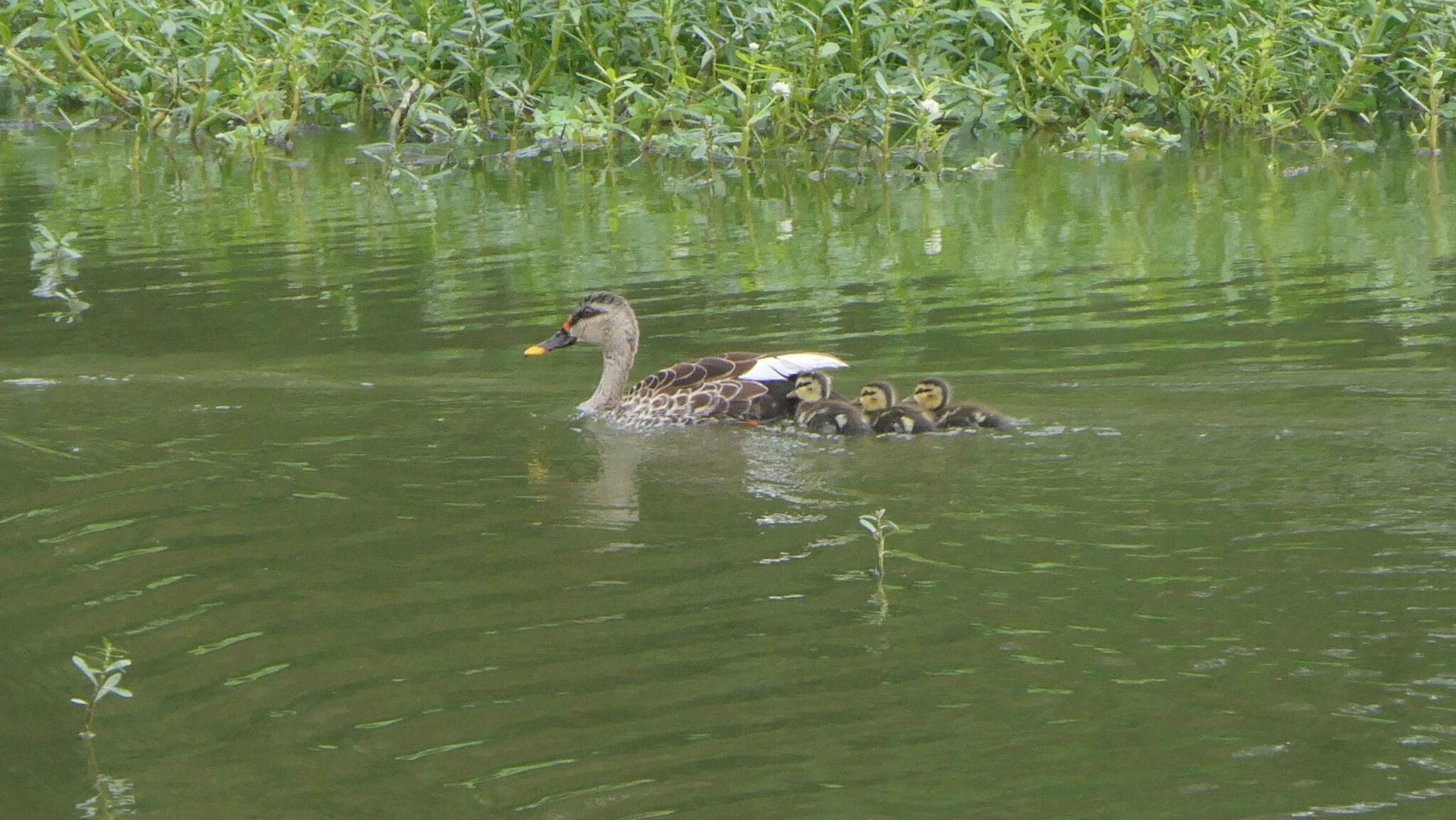
You can sense a parental anxiety about breeding Spot-billed Ducks when you are watching them. The adults linger, becoming still as they watch you with a steady gaze. Often, the parents call out to the brood. And then the ducklings appear, trailing the parent. I have had the fortune to see the adults feeding the ducklings, and the young ones disappearing into the folds of the parents’ feathers.
Like most wetland birds, ducks are nidifugous, which means the young ones can swim moments after hatching. By a process known as imprinting, they identify their parent/mother soon after birth and then follow the parent around.
- TL;DR – Death Stalks Like A Marabou Stork - July 24, 2024
- Dimorphic Egret – Meet this East African mystery bird - June 8, 2024
- Encounter: Northern Treeshrew in Arunachal Pradesh - May 19, 2024

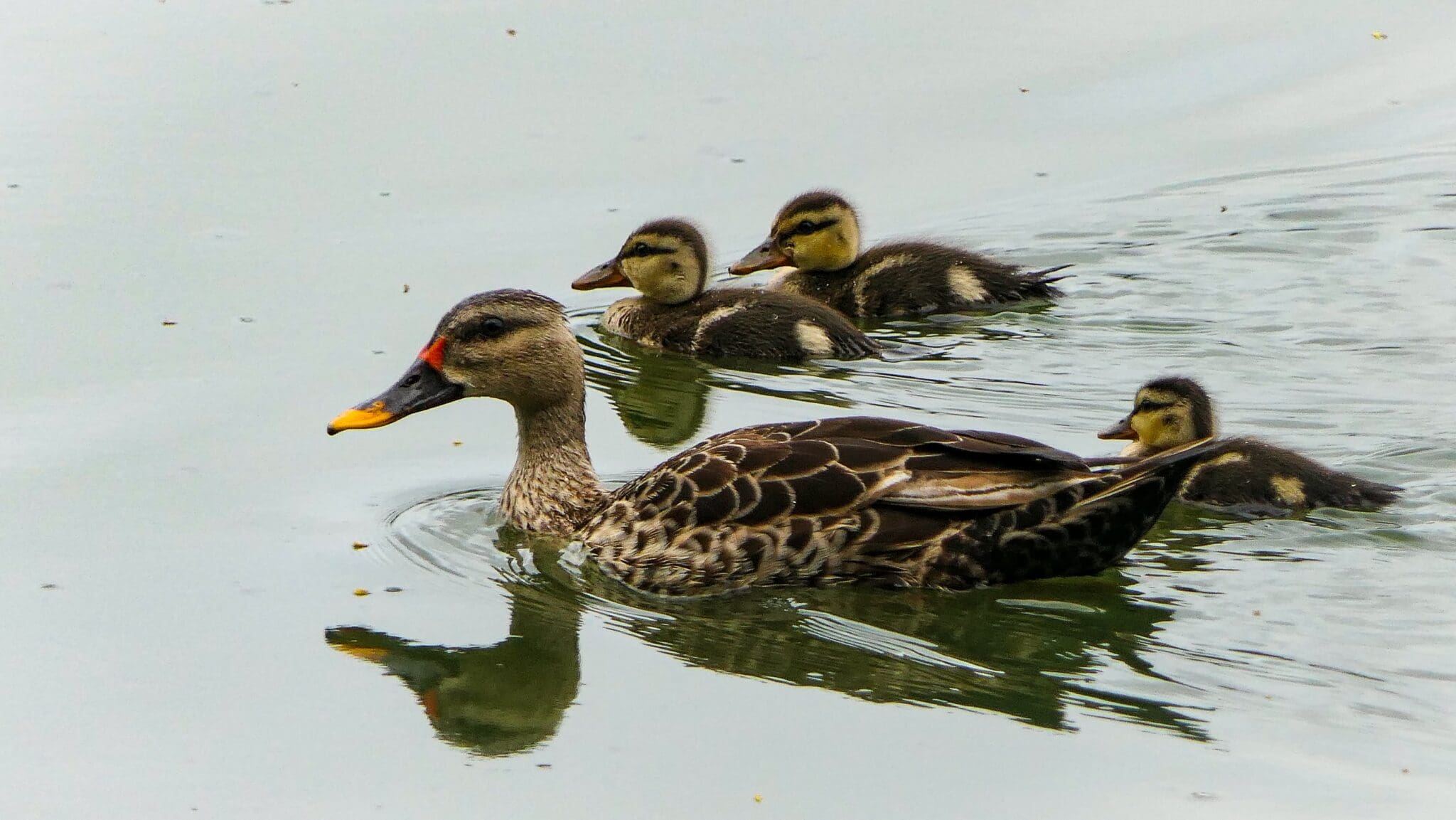
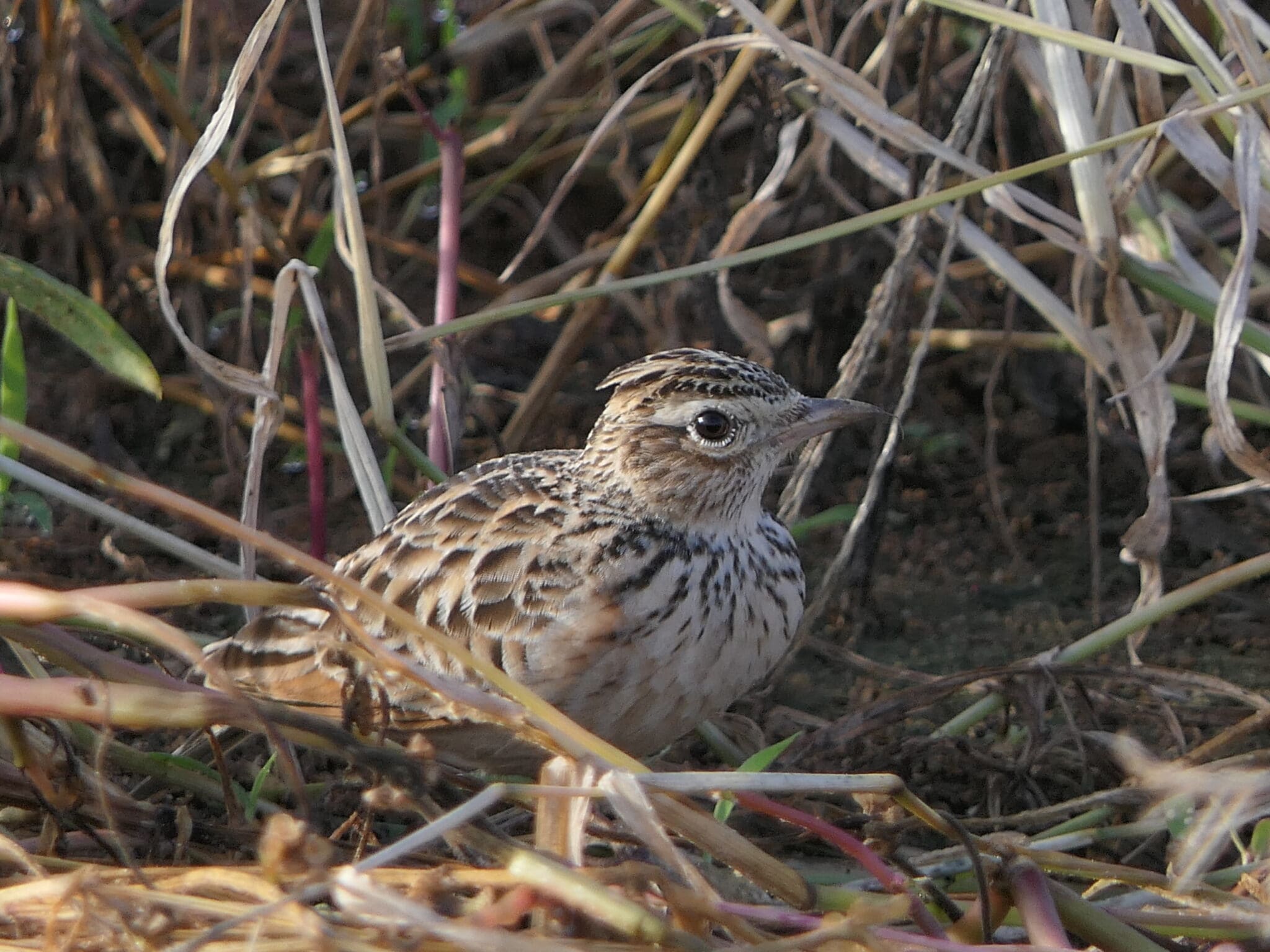
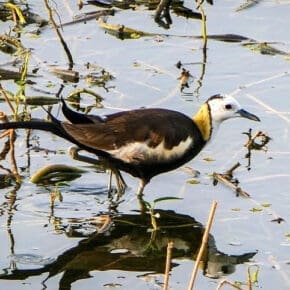
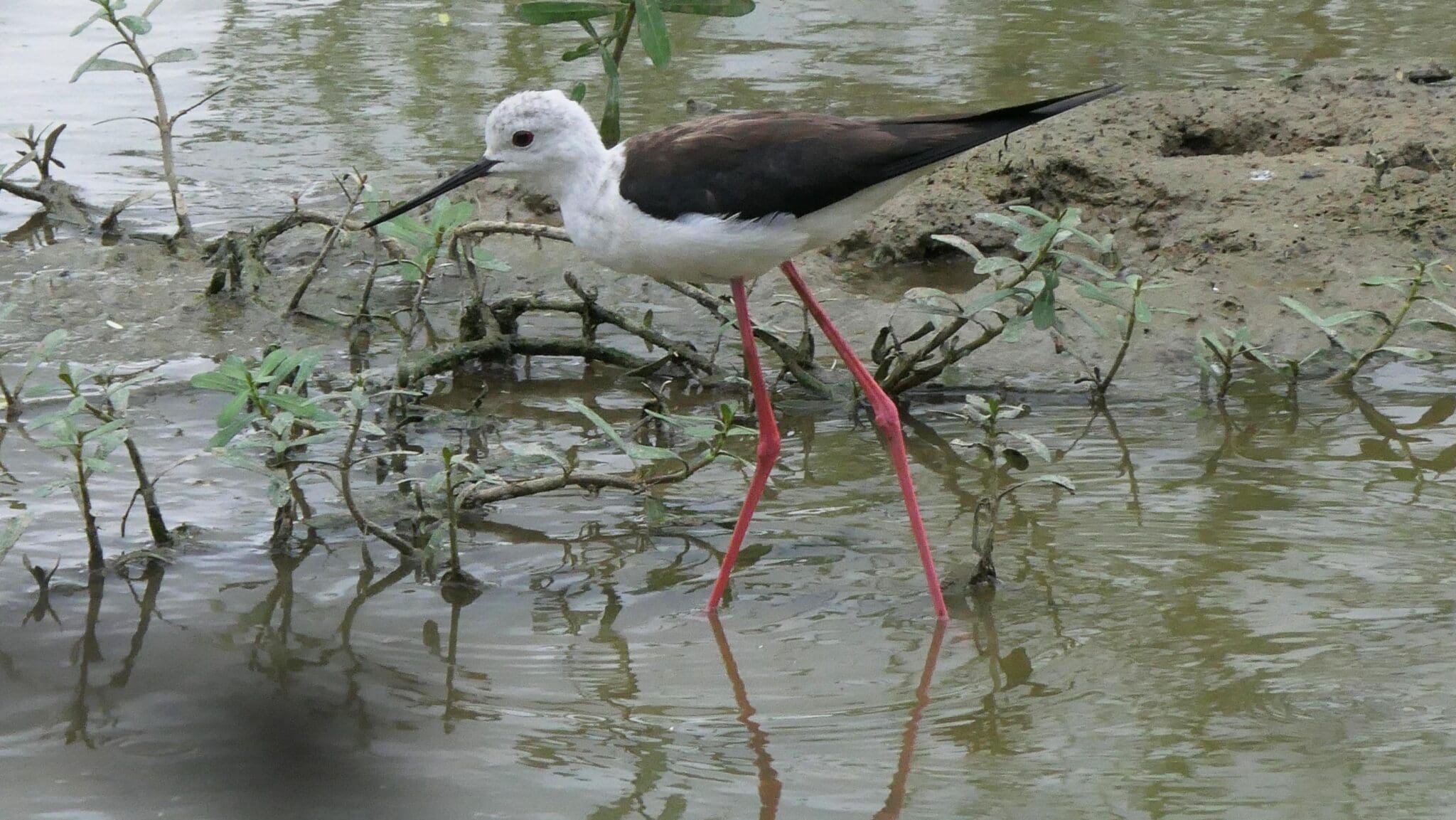
Are there good resources you can point to that help differentiate the common ducks found in India?
It is pretty hard to differentiate these species in their non-breeding plumages.
A good field guide that covers Indian waterfowl (like Grimskipp or Kazmierczak) and lots of patient birdwatching, not necessarily birding (which is about making lists and moving on).